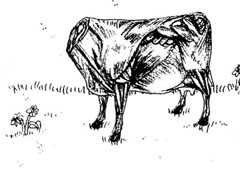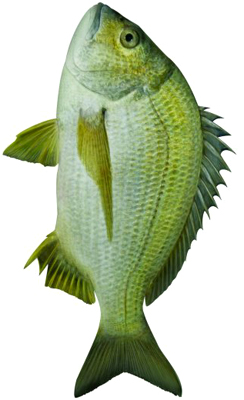Optional THEME:
KNOWLEDGE AND LANGUAGE
PROBLEM OF DEFINITION: BEEF AND COWS
Photo: Institute of Animal Science—Vetmeduni, Vienna
These short activities are a novel and lively introduction to the slippery problem of definition, and the idea of universals (Platonic forms).
TRY NOT TO THINK OF AN ELEPHANT!
Ask the students to close their eyes and try a silent thought experiment. In all seriousness ask them not to think of an elephant for a timed 15 seconds, During the time remind them to clear their thoughts and not think about an elephant. When the time is up ask for a show of hands of those who succeeded in not thinking about an elephant.
Still in silence ask them to recall what kind of elephant "appeared in their mind's eye." Do not take any comments at this stage. Tell them that we will refer back to this thought experiment later in the class.
CLASS ACTIVITY I: COW OR BEEF?
Students work in random pairs. Use the raucous, "animal noise ice-breaker" technique to assign the pairs. This was first encountered the introductory Map is not the Territory unit.
The bovine images are provided as sets of paper cards. Students are told to quickly turn over the cards and categorize each of the 24 images as “beef” or “cow,” placing them in two piles according to their designation. Next, from the “cow” images select the most “cow-like.” The idea is that there are central, and more marginal cases of what can be acceptably designated to the cow category. Do the same for the single most “beef-like” or “beef-ish” of the “beef” images. Printable Pdf.
Write down some of the criteria or diagnostic features that you are using for “cow” and for “beef.” What difficulties arise?
CLASS ACTIVITY II: CHAIRS CONTINUUM
Again students work in pairs. The chair images are shown below. Students are provided with a set of 15 cards just as before. This time they are told to determine which chair is the most “chair-like”—the most “archetypal” chair. Next determine the card that is the least “chair-like.”
Place the most chair-like chair on the far left, and the least chair-like, of the non-chair images, on the far right. Place the remaining cards in order between these end cards to create a kind of chair—non-chair continuum. You may have to switch the status of some of the cards as you debate. Printable Pdf.
Tell students to leave their chair continua on display. When everyone is ready students should move around the room and visit each one rather like perusing an art gallery.
GENERATIVE QUESTIONS
Was there general agreement about the most archetypal chair?
When you try to write down your personal definition of a chair, what difficulties arise?
Why must we generalize? Could we think or speak or reason at all without universals?
Where do our archetypal mental images for things and concepts come from?
THINKING ABOUT INDUCTION
This might be a good moment to introduce the power and the pitfalls of inductive thinking. Induction is the kind of reasoning we use to make generalizations based on particular instances. If we see enough individual elephants, naturally we build up a generic picture (a mental map) of what elephants are.
Students will begin to recognize that terms like: generalization, concept, rule, ideal, archetype, map, model, schema, metaphor, formula, stereotype, and Platonic Form are not interchangeable, but have family resemblances, and they overlap in the ways that they are used, especially in every day language. The notion of family resemblance will be tackled explicitly soon.
ORWELLIAN ENCOUNTER
I consider the Orwellian "Newspeak" unit essential for all TOK students. It introduces an ethical and political dimension to the slippery relationship between language and thought. The Newspeak unit is housed in the Knowledge and Politics optional theme.
How generic was your elephant?




























